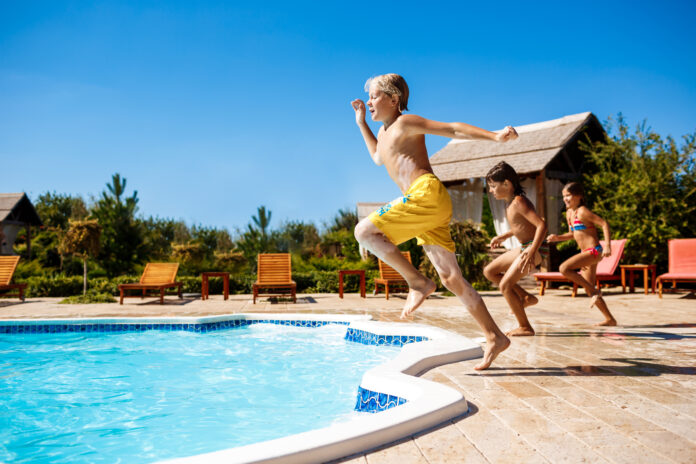The school year is winding down, summer is around the corner and that means more children are splashing into swimming pools, whether in a backyard, at summer camp, or at recreation center pools.
Along with the fun, though, are the very real dangers of drowning and other pool-related injuries. According to the Centers for Disease Control and Prevention, more children 1-4 years old die from drowning than any other cause of death.
The Cedars-Sinai Newsroom spoke with Amal Obaid-Schmid, MD, medical director of Trauma Services at Huntington Health, an affiliate of Cedars-Sinai, about how to keep the children in your care safe this summer.
What are the most important pool safety rules?
Any owner of a pool should first and foremost ensure that they have a fence at least four feet high around their pool.
If children or non-experienced swimmers will be in the pool, it’s very important to have adult supervision. I think asking another child to watch after their sibling, for example, is not adequate. You need a supervisor who’s an adult, who is not distracted with their cell phone, or a phone call inside the house, or a conversation with another adult, really taking that role very seriously. Not letting your eye off the child is huge because drowning can happen in an instant.
Have a variety of flotation devices in and around the pool, including a life jacket, but also floating noodles or a paddle board that a drowning person can grab onto to help them get out of the pool quickly.
Have a cell phone in the pool area so that you can call for help immediately. And adults involved in pool activities should learn basic CPR.
Describe the basic CPR method?
Place the person on their back and gently lift their chin and tilt their head back.
Pinch their nose and place your mouth tightly over their mouth and administer two short breaths. Then start chest compressions, placing one hand over the other and placing them over the patient’s breastbone and administering 30 compressions. Start again with the two breaths and compressions until the patient starts breathing.
Timing is crucial so call for help and start administering CPR as quickly as possible.
What other pool-related injuries should parents watch out for?
At the Emergency Department, we see significant head injuries and spinal cord injuries that come from reckless diving, and this happens more among teenagers and young adults.
To prevent diving injuries, make sure pool-goers are only using existing diving boards that are designed to dive into deep water. We see catastrophic injuries from diving from unsafe places such as roofs or patios, or diving head-first into shallow water.
Many of these injuries are alcohol related. Alcohol and swimming don’t mix. Your risk of a drowning or a near-drowning event increases 37-fold when you are consuming alcohol while swimming.
What is “dry drowning?”
Dry drowning is when you’ve had a near-drowning event that resulted in water getting into your lungs and that stimulates what’s called laryngospasm. What that means is that your airway is basically closed off so you are not getting enough oxygen and this can occur from several hours to 24 hours after the event.
The signs may be subtle and can present as coughing, vomiting, not being able to talk, or just not appearing well. If this happens you need to go to the Emergency Department or call 911 right away. Although it is very rare, dry drowning can be fatal.
The key to a fun and safe pool experience is prevention. If you have the right safety equipment and proper supervision, you can prevent most pool-related injuries and drownings.
Credit: Newswise
Image: cookie_studio/freepik


































